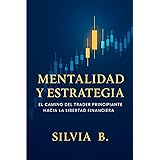The allure of digital gold has captivated many, yet the pathway to acquiring it has often been perceived as a highly technical and capital-intensive endeavor. As explored in the accompanying video, the question of whether an individual can realistically become a Bitcoin miner in 2025 is frequently contemplated. This analysis delves deeper into the foundational mechanics of Bitcoin mining, examines the shifting landscape of its incentives, and illuminates how innovative services are democratizing access to this critical network activity, allowing for a more inclusive future for aspiring digital prospectors.
Demystifying Bitcoin Mining Operations
At its core, Bitcoin mining is the intricate process by which transactions on the Bitcoin network are validated and new blocks are added to the blockchain. Powerful, specialized computing hardware, known as Application-Specific Integrated Circuits (ASICs), is employed by miners to solve highly complex cryptographic puzzles. The first miner to successfully solve such a puzzle is then granted the privilege of appending a new block of verified transactions to the chain. This pivotal contribution is acknowledged through a reward, distributed in newly minted Bitcoin, alongside any transaction fees accumulated within that specific block.
The integrity and security of the Bitcoin protocol are largely sustained by this mining process. A robust and decentralized network of miners ensures that transactions are processed efficiently and that the blockchain remains immutable, resisting any attempts at malicious alteration. This continuous computational effort acts as a digital bulwark, making the network exceptionally resilient against attacks.
The Rhythmic Halving of Bitcoin Rewards
A distinctive feature of Bitcoin’s economic model is the halving event, a programmed reduction in the block reward that occurs approximately every four years, or precisely every 210,000 blocks. This mechanism is central to Bitcoin’s deflationary design, ensuring its scarcity over time. Initially, upon the launch of the Genesis block on January 3, 2009, a miner was rewarded with 50 Bitcoin for each block found. This reward was halved to 25 Bitcoin around 2013, then to 12.5 Bitcoin in 2016, and further to 6.25 Bitcoin in 2020. The most recent halving, occurring in April 2024, brought the block reward down to 3.125 Bitcoin. The protocol dictates that there will be a total of 32 such halvings, with the final Satoshis estimated to be mined around the year 2140. Already, a substantial portion, approximately 19.5 million Bitcoin, has been brought into circulation, underscoring the diminishing supply available for future mining.
Understanding Bitcoin Mining Incentives and Their Broader Implications
The incentives underpinning Bitcoin mining are multifaceted, primarily comprising block rewards and transaction fees. While the block rewards diminish over time due to halving events, transaction fees are expected to play an increasingly significant role in compensating miners, especially as Bitcoin approaches its supply cap. However, the importance of these incentives extends far beyond individual miner profitability.
Network security, for instance, is directly correlated with the aggregate hash power committed to the Bitcoin network. As more computing power is dedicated to mining, the network’s resilience against 51% attacks, where a malicious entity could theoretically control the majority of hashing power, is fortified. This robust security posture is fundamental to Bitcoin’s reliability as a global monetary system. Furthermore, the aspiration for true decentralization within the Bitcoin mining ecosystem remains a critical, albeit challenging, objective. While significant progress has been made, the concentration of mining power within large pools is a subject of ongoing discussion and development, emphasizing the need for continued efforts to distribute hash power more widely.
How Miners Strategically Benefit
For individual participants, the benefits derived from Bitcoin mining are clear. Firstly, there is the potential to earn newly minted Bitcoin directly from the network. Secondly, miners are also compensated with the transaction fees contained within the blocks they successfully mine, providing an additional revenue stream. Finally, and perhaps most strategically, is the opportunity for price appreciation. Miners who elect to “HODL” (hold on for dear life) the Bitcoin they mine, rather than immediately selling it, are often positioned to capitalize on Bitcoin’s long-term value growth. This approach transforms mining into a strategic accumulation method, analogous to planting a seed today that is expected to grow into a valuable tree in the future, rather than selling its sap for immediate, albeit smaller, returns.
Strategic Bitcoin Mining in 2025: Overcoming Traditional Hurdles
The notion that one might have “missed the boat” on Bitcoin mining is a common sentiment, particularly given the increasing difficulty and scale of operations observed in recent years. Historically, traditional home mining has presented a formidable set of challenges that often deter individual participation. The operational maintenance of specialized mining equipment is continuous and demanding, requiring technical expertise to ensure machines operate without downtime. Moreover, the significant noise generated by ASICs and the heat they produce can render home-based mining impractical for many. Perhaps the most prohibitive factor, however, is the exorbitant cost of electricity, which can quickly erode any potential profits unless located in regions with exceptionally cheap power sources.
The Advent of Mining-as-a-Service (MaaS)
In response to these inherent barriers, innovative solutions such as Mining-as-a-Service (MaaS) have emerged, notably exemplified by platforms like SasMining. This model fundamentally simplifies the entry point into Bitcoin mining by offloading the complex operational and logistical burdens from the individual. Under a MaaS framework, participants are able to purchase or lease mining rigs, with the provider then assuming full responsibility for the setup, ongoing maintenance, and management of the mining operations. This approach effectively removes the need for technical proficiency, dedicated physical space, and the constant concern over electricity costs, thereby making Bitcoin mining accessible to a much broader audience.
Unlocking Value: The SasMining Advantage
SasMining and similar MaaS providers offer a compelling proposition by enabling individuals to engage in Bitcoin mining without the substantial overheads associated with traditional setups. The platform meticulously handles all technical aspects, including the deployment, continuous monitoring, and optimization of mining equipment in facilities optimized for low-cost electricity. This comprehensive service allows clients to focus exclusively on “stacking sats,” the colloquial term for accumulating Bitcoin, with minimal operational distraction. A service fee, typically ranging from 5-15% of the mined Bitcoin, is usually taken by the provider, reflecting the value of their managed infrastructure and expertise.
A particularly attractive benefit presented by such services is the ability to acquire Bitcoin at a significant discount compared to purchasing it directly on spot exchanges. It is often observed that Bitcoin can be stacked at a discount ranging from 30% to 50% through mining operations. For instance, an analysis of the Bitmain S19 XP Hydro rig suggests a daily mining cost that is substantially lower than the prevailing spot price of Bitcoin, illustrating a considerable advantage for miners. Similarly, the S21 Pro model has been cited with a mining cost that harks back to Bitcoin prices seen over a year prior, providing an opportunity to effectively “time travel” and acquire Bitcoin at a past, lower valuation. These financial efficiencies underscore the strategic value of MaaS as an alternative acquisition strategy.
Transparency and Control in MaaS
In an ecosystem where trust is paramount, MaaS platforms understand the importance of transparency. Clients are typically afforded access to a detailed dashboard that provides real-time insights into their mining rig’s status and performance metrics. Data points such as hash rate over various periods, the total Bitcoin mined since activation, and the pending balance prior to payout are commonly displayed. The capability to select one’s preferred mining pool, with options like LuxOr pool and Ocean often available, further empowers the client, ensuring that operational decisions are not made blindly. This level of visibility fosters confidence and allows participants to monitor their investment effectively.
Ultimately, the prospect of engaging in Bitcoin mining in 2025 is not only possible but increasingly accessible, thanks to the evolution of services like SasMining. These platforms mitigate the historical complexities and costs, inviting a new wave of participants to contribute to and benefit from the foundational technology of the digital economy.







